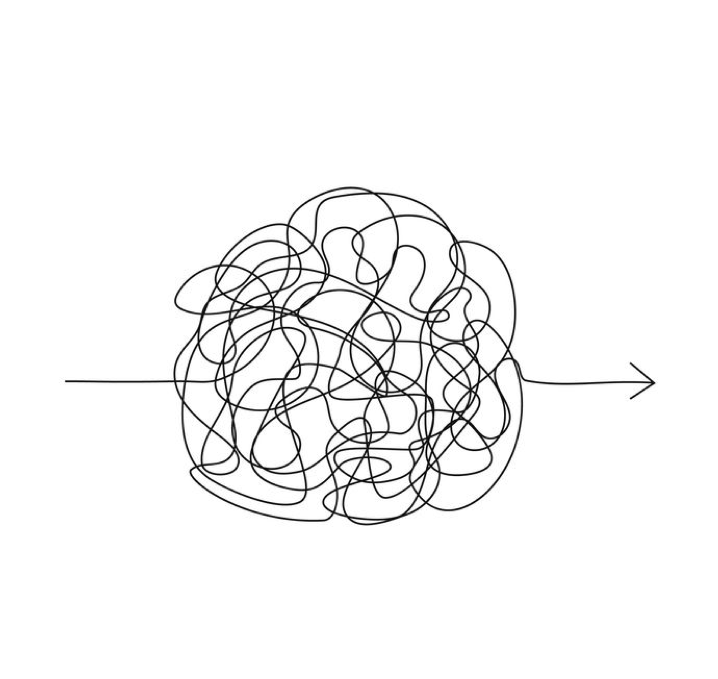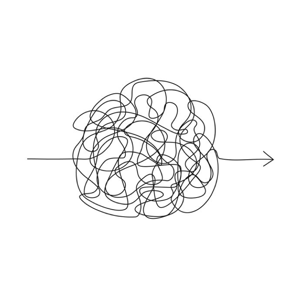From Sales Process to Buying Journey
March 5, 2019

 The idea of a “sales process” has been around since long before I was offered my first sales role. The concept has been heavily promoted by the mainstream sales methodology vendors and adopted with varying degrees of effectiveness by many sales organisations.
The idea of a “sales process” has been around since long before I was offered my first sales role. The concept has been heavily promoted by the mainstream sales methodology vendors and adopted with varying degrees of effectiveness by many sales organisations.
But I’m not sure it was ever an appropriate metaphor and with the emergence of an increasingly well-informed customer community the idea that a complex B2B sale can be distilled down to a step-by-step sales process seems increasingly at odds with reality.
This is particularly the case for unfamiliar, strategic purchases where the customer may have no recent past experience of the various considerations involved. As Gartner recently pointed out, the customer decision journey for these sorts of purchases is inherently non-linear and sometimes verging on the chaotic...
At any point in their decision journey, the customer can choose to move forward, move backwards, stay where they are, go around in circles, put the journey on hold or abandon it all together. And the chances of delay or abandonment increase exponentially with the number of stakeholders in the decision-making group.
These challenges combine to mean that the most common outcome of these sorts of complex evaluations is the conclusion that they might as well decide to “do nothing”. As a consequence - in many sales situations - our most powerful competitor is not another similar vendor, but the status quo.
So, whilst the idea of a “process” with a predictable outcome might be applicable to regular, familiar purchases, we can’t really apply the term to the typical complex buying decision. We can’t assume or imply that our customer is going to follow an entirely predictable path or that apparently similar opportunities will evolve in similar ways.
Nor can we or should we assume that our best chance of success lies in following a standard series of sales steps. Now, I’m not suggesting that we encourage our sales people to go freelance and make it up as they go along. There are a series of sales activities (the most important being discovery and qualification) that are of universal relevance.
It’s just that we need to apply them in the context of our specific customer’s decision journey, rather than our own generic linear sales process. And that means we need to accurately diagnose what sort of journey our customer is embarked on, and what phase of the journey they happen to be in right now.
For example, we need to know:
- Whether or not our customer has recent experience of buying similar solutions (or solving similar problems)
- Whether or not our customer has a clearly defined vision of their desired solution (and the extent to which we have influenced this)
- Whether or not our customer has a well-defined decision-making process, where they are at the moment, and what they intend to do next
- Whether or not they are open-minded about who to do business with or have a preferred option already in mind
- Who will be involved in the decision process, what influence they have, and whether the decision group is well-aligned
We also need to identify what phase they had reached in their decision process when we first became aware of the project and got involved in the exercise.
These insights – every bit as much as problem-solution fit - can help us to judge whether they are likely to buy, whether we are likely to win and whether the effort is likely to be worth it.
And whilst the actual buying journey itself is often non-linear, the phases through which a successful buying decision evolves (sometimes more than once!) are somewhat consistent – but their next step could be in any direction:
- At the start, they are broadly satisfied with the status quo
- Then something happens to disturb their equilibrium
- Then they start to explore the situation and their options
- Then they seek to define their decision criteria
- Then they aim to select their preferred option
- Then they seek to verify their decision and negotiate the best deal
- Finally, they seek final confirmation and approval to proceed with the project
It’s important to accurately diagnose the current phase of our customer’s decision journey, and to be very aware of the point at which we entered their journey. The later we get involved, our scope for influencing their thinking is progressively and significantly reduced unless we can persuade them to retrace their steps.
But if we engage early and discover that they are inexperienced or suggestible buyers, we have the potential to influence not only their decision criteria but also to help them to navigate the complexities of reaching an internal consensus amongst the key stakeholders.
Armed with a buyer-centric perspective, we can give our sales people flexible frameworks – a combination of flexible sales tools and buying enablers - that serve to influence and support each customer’s specific buying journey. That’s got to be way more effective than a one-size-fits-all sales centric approach, hasn’t it?
This article was originally published in the March 2019 edition of Top Sales Magazine.
ABOUT THE AUTHOR
 Bob Apollo is a Fellow of the Association of Professional Sales, a member of the Sales Enablement Society, a regular contributor to the International Journal of Sales Transformation and the Sales Experts Channel and the founder of Inflexion-Point Strategy Partners, the leading UK-based B2B value-selling experts.
Bob Apollo is a Fellow of the Association of Professional Sales, a member of the Sales Enablement Society, a regular contributor to the International Journal of Sales Transformation and the Sales Experts Channel and the founder of Inflexion-Point Strategy Partners, the leading UK-based B2B value-selling experts.
Following a successful corporate career spanning start-ups, scale-ups and market leaders, Bob is now relishing his role as a pro-active advisor, coach and trainer to high-potential B2B-focused sales organisations, systematically enabling them to transform their sales effectiveness by adopting the proven principles of value-based selling.


Comments